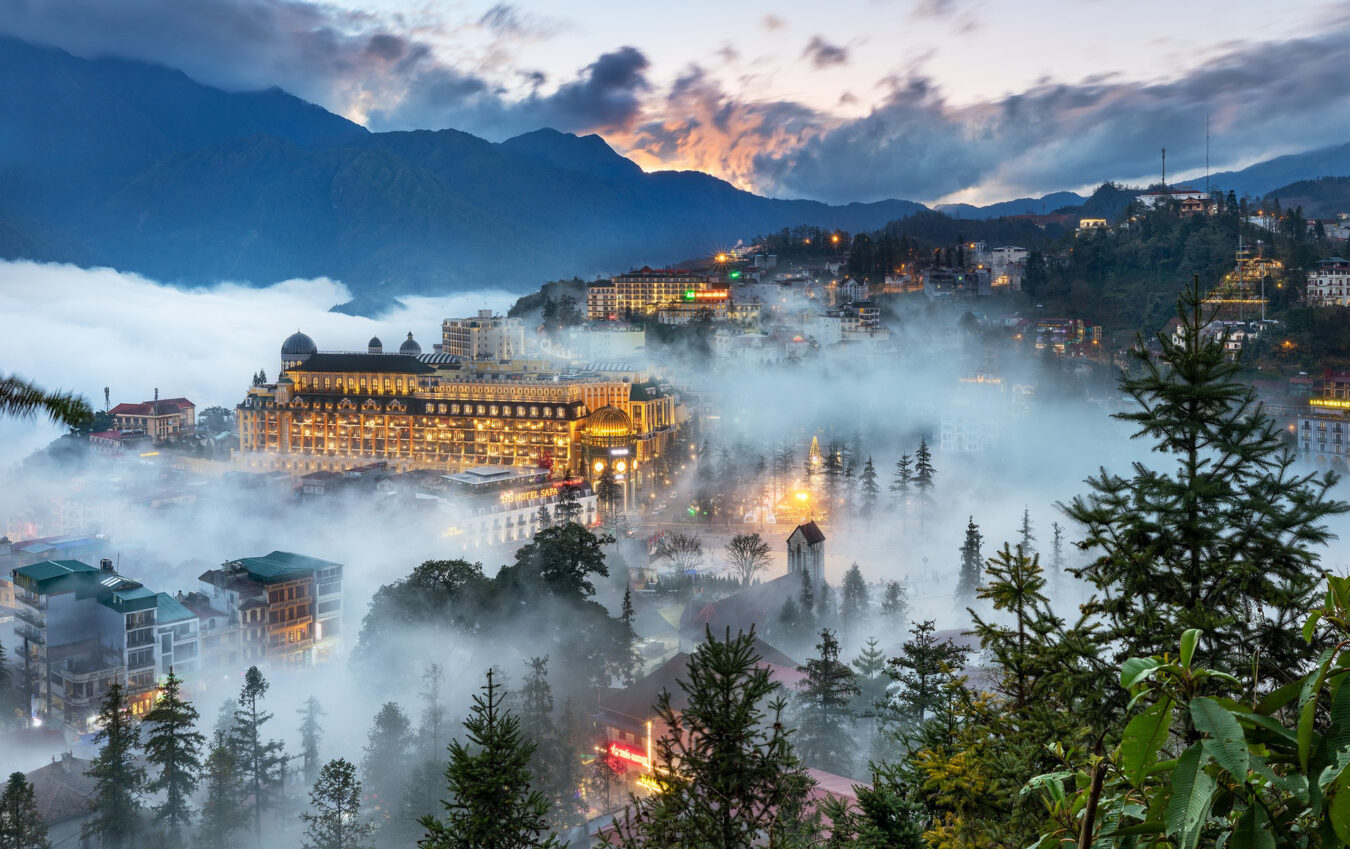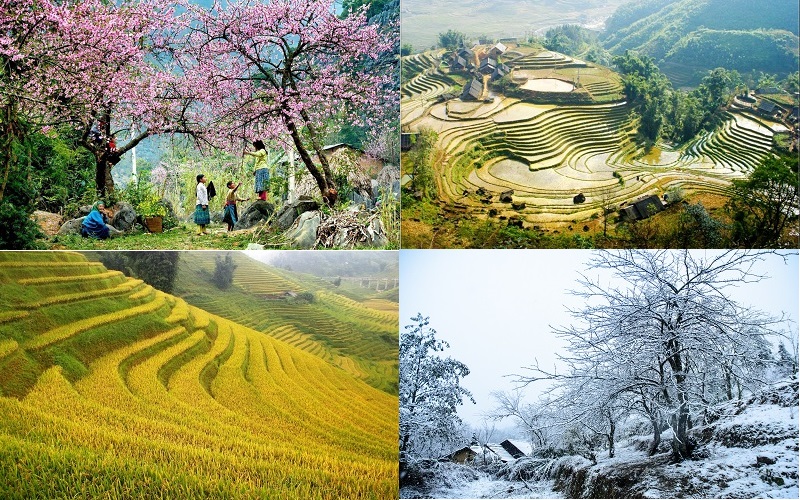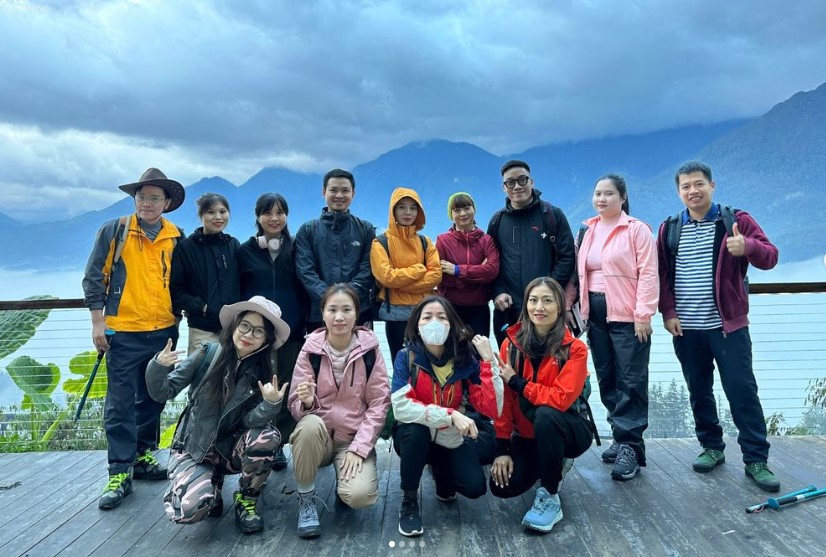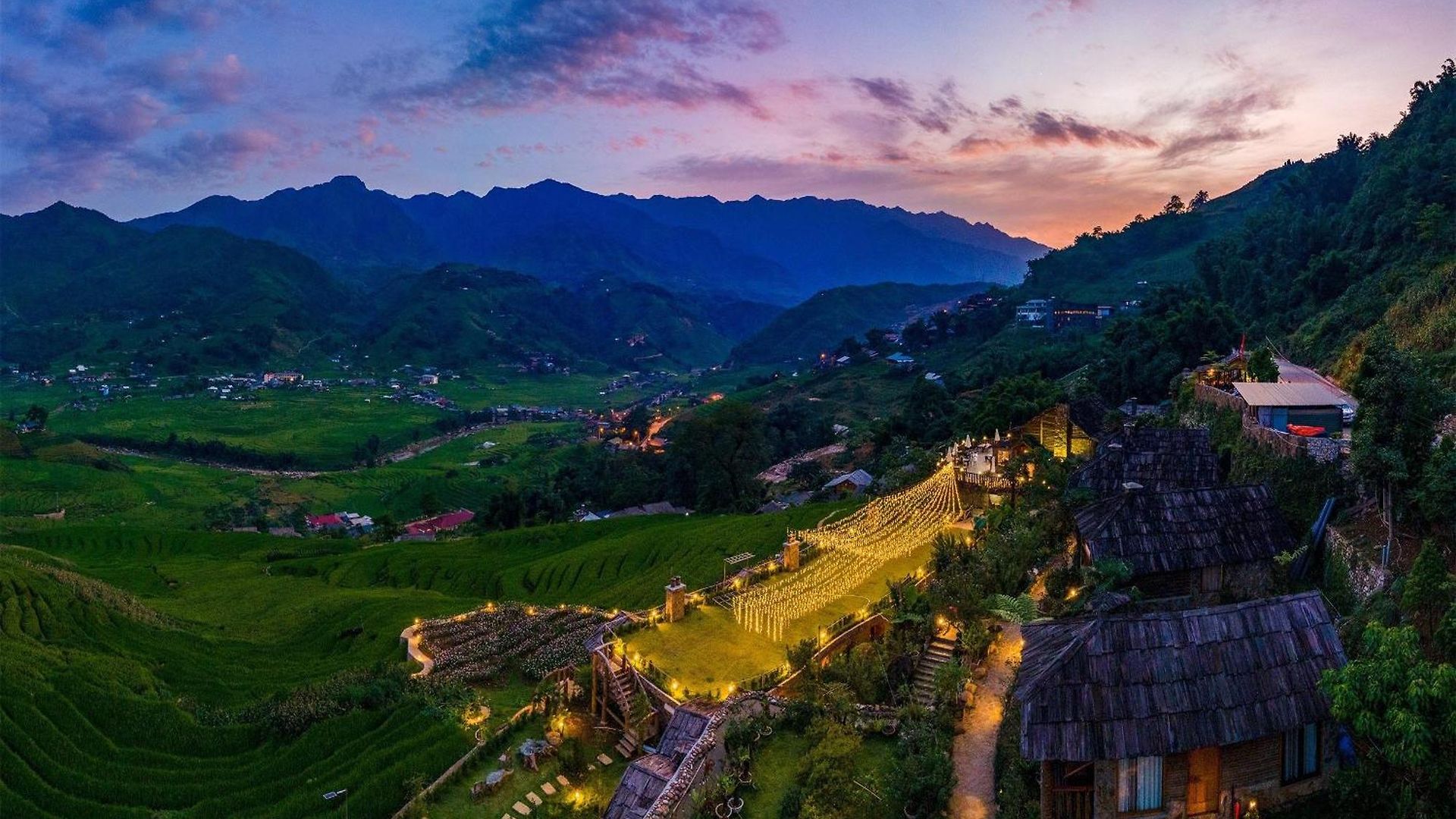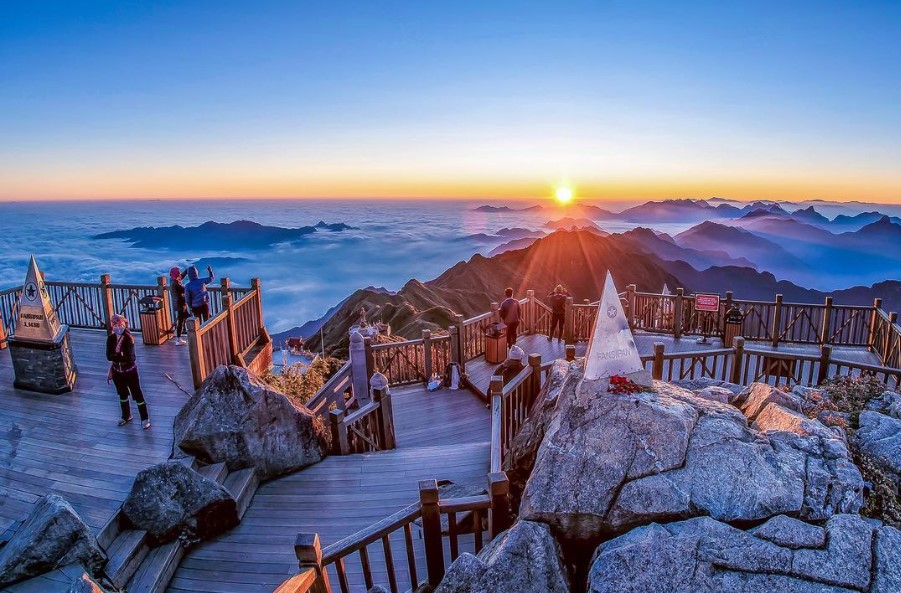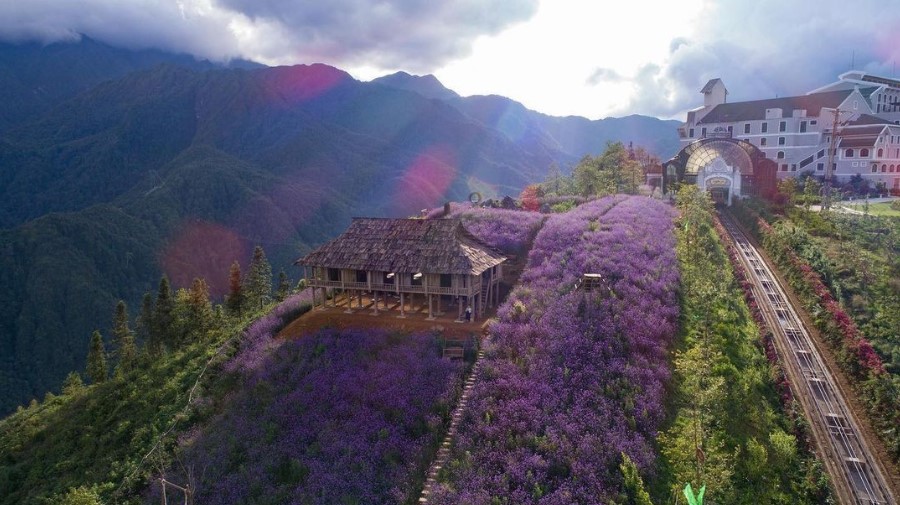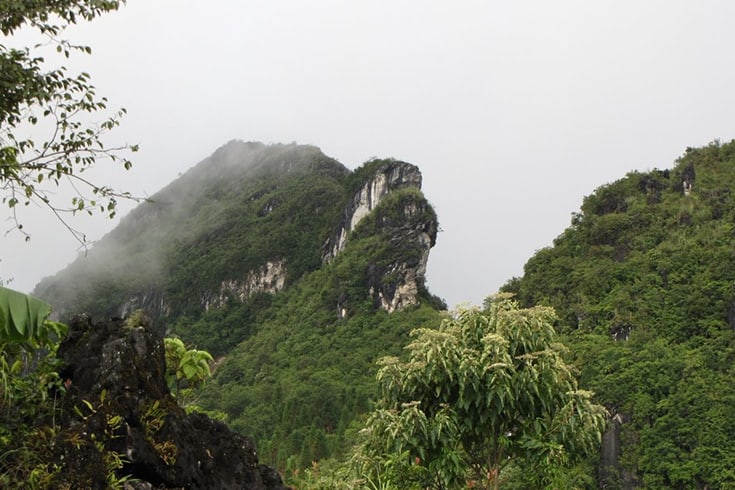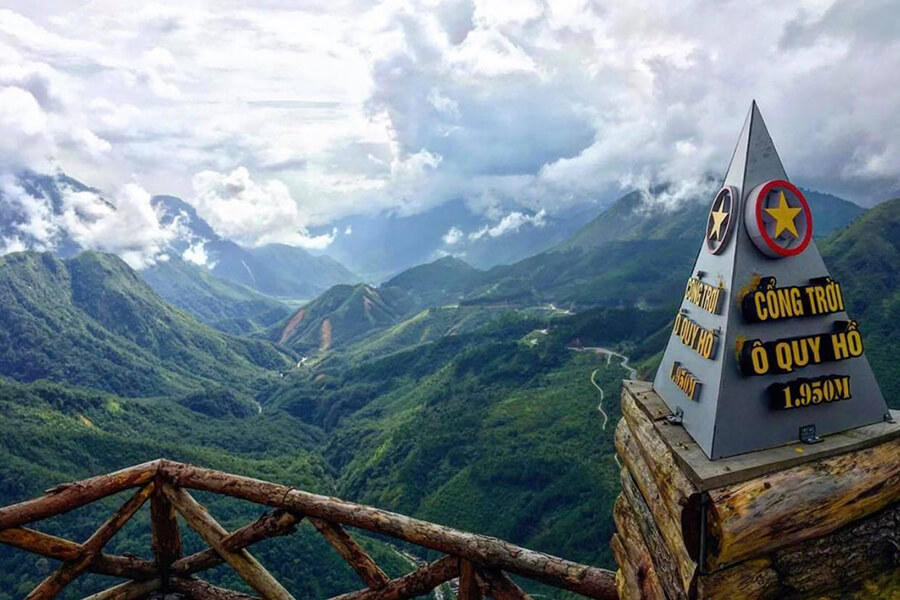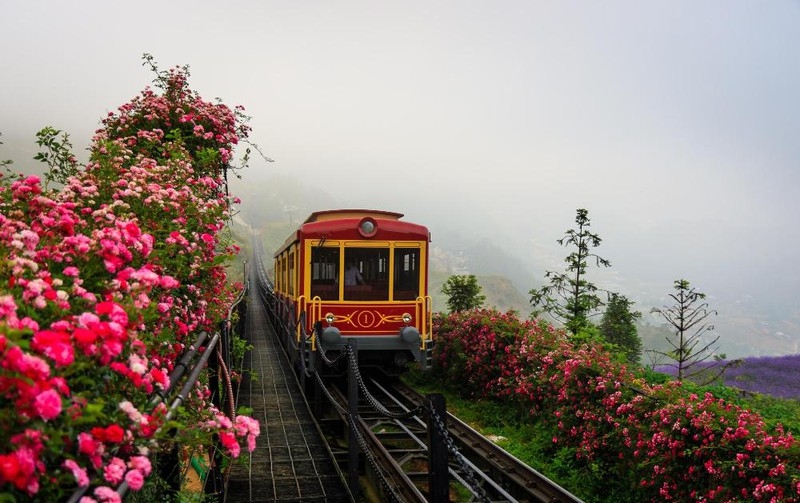Sapa is one of the most famous tourist destinations in the northern mountainous region of Vietnam. It is a place full of natural wonders, rich culture, and intriguing local life. Have you ever wondered how to plan a perfect trip to Sapa? Let’s take a look at some helpful tips to ensure you have an enjoyable and fulfilling journey in Sapa.
Contents
1. Sapa – The Cloud City
In winter, Sapa’s temperature can drop below 0 degrees Celsius, with frost and snowfall. Located at an altitude of over 1,500 meters, Sapa is often called the “cloud city” as it is covered in clouds throughout the year, creating a romantic and captivating atmosphere that attracts both domestic and international tourists.
Each of Sapa’s four seasons has its own unique charm that captivates visitors. In spring, peach blossoms, plum blossoms, and ban flowers bloom all over the mountains, creating a fairyland-like scenery. In summer, the terraced fields are filled with water as locals plant rice, and the mountains bloom with countless beautiful flowers.
In autumn, around September and October, the terraced fields are painted with the golden hue of ripe rice. When winter arrives, Sapa becomes cold but still enchanting, especially with the appearance of frost and snow, drawing crowds eager to witness snow falling in Vietnam.
2. What you need for your trip to Sapa?
- Clothing:
Sapa’s temperature is typically 5 to 8 degrees Celsius lower than Hanoi, and on Fansipan Peak, it can be 5 to 8 degrees Celsius colder than in Sapa town itself. In summer, with temperatures ranging from 15 to 25 degrees Celsius, the weather is cool, so you should pack light clothing with a thin jacket. In winter, temperatures can plummet to 0 degrees Celsius, so you’ll need warm clothing, including gloves, scarves, and hats, to stay comfortable in the cold.
- Footwear:
As most of Sapa’s attractions involve walking, you should prepare hiking shoes, walking shoes, or sports shoes. You may also want to bring sunglasses and masks for motorbike rides.
- Identification:
You will need your ID card for hotel check-in, and don’t forget to bring your driver’s license if you plan to ride a motorbike.
3. How to Get to Sapa
From Hanoi to Sapa, there are various ways to travel, such as by motorbike, bus, renting a private car, or by train.
- By Motorbike:
This option can be dangerous and risky, especially as the road to Sapa is winding and mountainous. Only those in good health and with enough time should consider this mode of travel.
- By Train:
Trains to Lao Cai offer various seating options, such as hard seats, soft seats, and sleepers. Trains typically depart at 9:00 PM or 10:00 PM and arrive in Lao Cai the next morning. Odd-numbered trains travel from Hanoi to Lao Cai, while even-numbered trains return from Lao Cai to Hanoi. A disadvantage of taking the train is that you’ll need to catch a bus from Lao Cai to Sapa, and the price for a soft sleeper with air conditioning is quite high, around 500,000 VND per ticket from Hanoi.
- Renting a Private Car:
If you’re traveling with a group or family, you can rent a 4-seater, 7-seater, or Limousine. Renting a Limousine is the best option as it offers more comfort, and the drivers are familiar with the long and winding road to Sapa.
- By Bus:
Taking a bus to Sapa is the most popular option among travelers. With the Hanoi – Lao Cai highway now in operation, traveling to Sapa by bus has become safer, more convenient, and faster.
Typically, you can book a bus departing at 7:00-8:00 AM to arrive in Sapa around noon for hotel check-in. Alternatively, you can book a bus at 10:00 PM in Hanoi and wake up refreshed in Sapa the next morning, ready for a full day of exploration.
4. Where to Stay in Sapa
Sapa offers a wide range of accommodations, including hotels, guesthouses, and homestays.
Two main areas with budget hotels and guesthouses in Sapa are Xuan Vien Street and Fansipan Street, with prices ranging from $20 to $24 per night for a double room. During holidays, prices may rise to $32 to $40 per night depending on the guesthouse.
If you prefer a quieter, more nature-connected stay and want to save on accommodation costs, consider staying in a homestay, where you can sleep at a local’s house, share meals, and participate in their daily life. This option is much cheaper than staying in hotels and offers a unique cultural experience.
Currently, Sapa has several “homestay villages” in Ban Ho, Lao Chai, Ta Phin, and Ta Van. You can inquire about rooms upon arrival, as most households in these villages offer this service, so you don’t need to worry about finding a place to stay.
5. Getting Around in Sapa
- Option 1:
Rent a motorbike to get around, which costs around $4 to $6 per bike, and you’ll need to fill the tank yourself. The rental price is calculated per day (from 6:00 AM to 6:00 PM), and the cost is the same whether you rent in the morning or afternoon. This option is suitable for young travelers who are comfortable riding motorbikes and enjoy the experience.
- Option 2:
You can book a shared car (if traveling alone) or rent a private car (if traveling in a group) to visit the attractions in Sapa. The price varies based on the number of attractions you plan to visit.
- Option 3:
Take a taxi in Sapa. This option is ideal for groups or families. However, taxi fares in Sapa are quite high, and prices may be based on the destination rather than the meter, so be sure to ask for the price beforehand.
6. Must-See Attractions in Sapa
Sapa offers many famous and interesting attractions, so depending on your arrival and departure times, you can choose suitable places to visit. Here are some of the top attractions in Sapa listed in priority order for your upcoming trip.
Conquer Fansipan Peak
- Best Time: Morning/afternoon
- Duration: Half a day
Standing on the peak of Fansipan, 3,143 meters above sea level, surrounded by floating clouds and towering mountains, is an unforgettable experience. You should visit in the morning or when the sky is clear to enjoy the view.
Fansipan Peak is about 9 kilometers from Sapa town. To reach the summit, you’ll need to purchase a Fansipan cable car ticket. The ticket price applies to both adults and children over 1 meter tall, while children under 1 meter can ride for free.
Fansipan Legend is now a cultural and tourism complex, featuring spiritual sites such as the Bamboo Garden, Bao An Zen Monastery, and Bich Van Zen Monastery, along with restaurants, shopping areas, and magnificent gardens like the lavender hill, white mustard flower waterfall, sunflower garden, rose valley, and vibrant rhododendron flowers.
Visit the Ham Rong Mountain Tourist Area
- Best Time: Afternoon
- Duration: Half a day
Ham Rong Mountain is located near the town center, making it convenient for visitors. You can walk there, and it is considered the “Da Lat garden” of the Northwest, with lush greenery and colorful flowers.
In 2018, the entrance fee for Ham Rong Mountain was 70,000 VND per person. A path made of natural stone steps leads visitors through Orchid Gardens 1 and 2, the 12 Zodiac Statues, and the European Flower Garden.
Ham Rong Mountain has been increasingly beautified with more greenery, flowers, and places for visitors to take “Instagram-worthy” photos. Standing on Ham Rong Mountain, you’ll feel like the clouds are within reach, while the vibrant flowers on the ground and the gentle sunshine create a peaceful and delightful setting. In the afternoon, you can watch the sunset as it slowly sinks behind the mountains, painting the sky with warm hues.
Continue the Journey to the Legendary O Quy Ho Pass
With a length of over 50 kilometers, O Quy Ho is one of the “Four Great Passes” of Northern Vietnam and is considered one of the most challenging and longest mountain passes in Vietnam. O Quy Ho cuts through the Hoang Lien Son mountain range, connecting Lai Chau and Lao Cai provinces, serving as a natural boundary. This is also a favorite spot for photography enthusiasts.
Rose Valley – A Romantic Paradise in Sapa
Rose Valley is located in a small hamlet on Muong Hoa Road, in the town of Sapa. With its natural design and harmonious lines, this place offers visitors a sense of peace and unparalleled beauty. Just hearing the name is enough to know that Rose Valley is a romantic and ideal destination for young people with a dreamy soul. This spot is particularly well-suited for couples in love.
Silver Waterfall – One of the Most Beautiful and Famous Waterfalls in Vietnam
Silver Waterfall is known as one of the most beautiful and famous waterfalls in Vietnam, located in San Sa Ho Commune, Sapa, Lao Cai. The waterfall stands over 200 meters tall, with water cascading down into the Muong Hoa stream all year round, creating a magnificent and vast landscape. Silver Waterfall is about 12km from the center of Sapa town, heading towards Lai Chau – Dien Bien. Visitors can choose various modes of transport to get here, such as motorbikes or cars. The journey to reach Silver Waterfall is not easy. You’ll have to go through the winding paths, with pine forests and dense vegetation on either side. However, once you arrive, you’ll feel the refreshing and relaxing atmosphere that bustling cities can’t offer.
Sapa is always one of the most famous tourist destinations in the northern mountainous region of Vietnam. Peony hope this recommendation helps you find the best journey for you.


